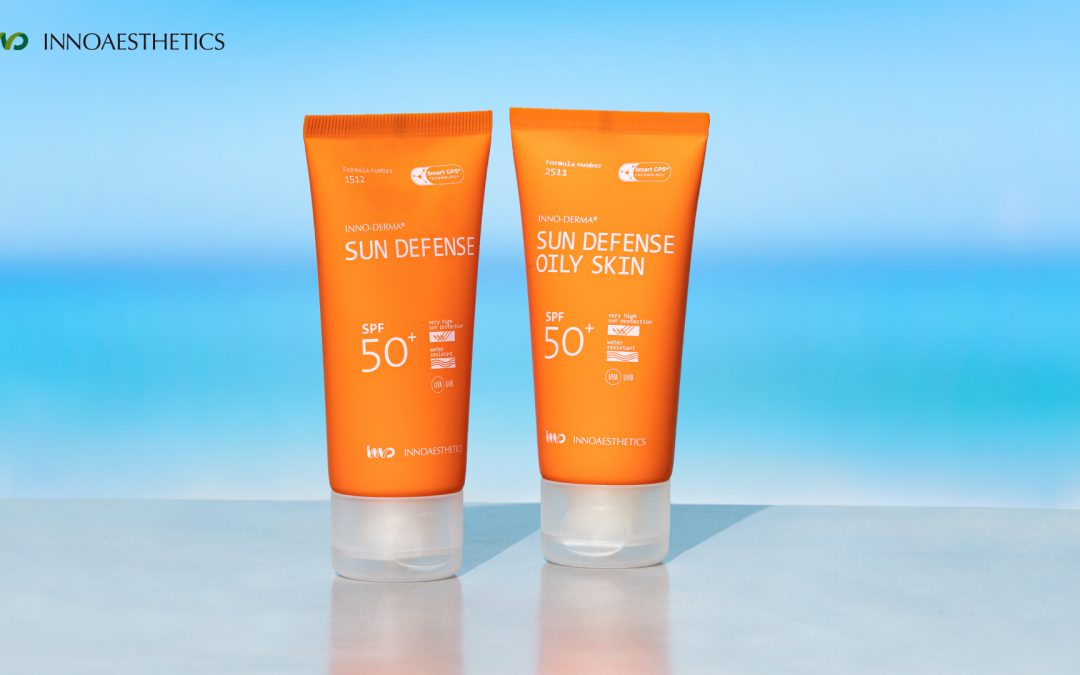Although we already know how damaging the sun can be to our skin health, evidence shows that we keep making the same mistakes every summer.
Let’s have a look at the most common summer skincare mistakes.
1. SHAVING OR WAXING JUST BEFORE THE BEACH
Removing hair from your body just before going to the beach is something that almost everyone has done. It can seem harmless but it is not. Both waxing and shaving imply mechanical irritation to a certain degree. This irritation is very mild, but it makes the skin more susceptible to overreact to UVR, increasing the risk of sunburn or the formation of dark spots and wrinkles. Therefore, we recommend removing your hair at least one day before sunbathing.
2. USING SKINCARE INGREDIENTS THAT MAKE YOUR SKIN PHOTOSENSITIVE
Some ingredients contained in skincare products can increase your skin’s sensitivity to sunlight. Photosensitivity makes your skin more vulnerable to the damaging effects of sun exposure (it includes stains, photoaging, sunburn, etc). Therefore, you need to identify these ingredients and use them only at night or when the sun is mild.
- ALPHA HYDROXY ACIDS (AHAs): Glycolic, Lactic, Citric, Malic, and Mandelic Acids
- SALICYLIC ACID
- RETINOL
- BENZOYL PEROXIDE (normally used to improve acne)
All these ingredients refine your skin and remove dead cells from the surface, making the corneal layer thinner. In the right concentrations, these acids visibly improve the skin appearance. They can be good for your skin health, but not if you apply them before hitting the beach.
Be aware that certain medications can also make your skin photosensitive.
3. EXFOLIATING TOO FREQUENTLY
Chemical peels are very good for treating several skin conditions and for skin rejuvenation.
They cause a controlled exfoliation of the uppermost layers of the skin to promote cell turnover and favor the penetration of the active ingredients into deeper skin layers.
Despite their many benefits, chemical peels imply a thinning of the skin barrier and, therefore, a decrease in the skin protective capabilities. After a peel, the skin needs at least a few days to recover all its defensive functions, and a bit more to be at its best. This is why after a chemical peel you are told to wear sunscreen SPF50 every day for a few weeks at least.
If you want to have a chemical peel in summer, go ahead, but ask your skin specialist for a mild one. We recommend not doing it too frequently during the hottest months.
4. USING A SUNSCREEN THAT NO LONGER PROTECTS
The summer season has just started, and you are preparing your bag for the long-waited day when you are going to wear your new swimsuit and take the first dip in the sea. Then, you realize you still have a bottle of sunscreen from last summer, but it looks like it was not so well closed and there is cream all around the cap. Should I use it or not? It is a tricky question.
Most sunscreens are designed to last three years unopened; you can check the spiry date on the box. To know for how long they will be effective after opening you should check the PAO date (Period After Opening). It is normally indicated in months with a number and the letter M. For instance, 12M means that you can use it for 12 months after the first use. However, to preserve the condition of your sunscreen, you should take some precautions:
- Close the bottle properly
- Do not leave your sunscreen under the sun
- Avoid extreme heat or cold
- Keep it in a dry and dark place
If you do not remember when you opened the bottle or suspect it may have gone bad, you can tell by checking its texture, smell, and color. A sunscreen in bad condition shows different textures, becoming watery with clumps. You may also notice changes in odor or color.
5. NOT APPLYING ENOUGH SUNSCREEN
It is a fact: most people under-apply sunscreen.
SPF is tested by applying a generous layer of sunscreen. If you use not enough, you cannot trust its effectivity.
For an adult, the recommendation is 30ml/1 ounce (a shot glass full) for the whole body and reapply every 2 hours after swimming.
Also, remember to apply it at least 15min before sun exposure to let it penetrate.


